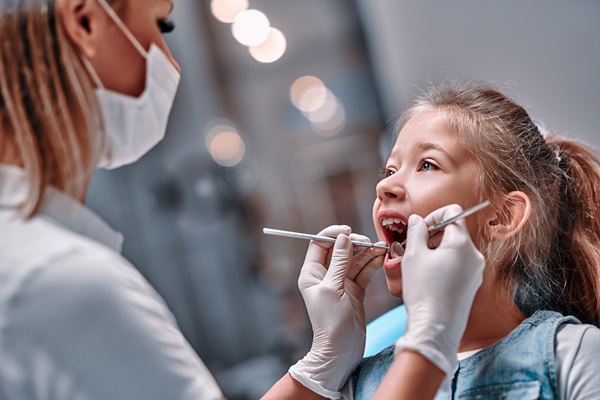Dental Bonding Cosmetic Solutions for Teens from a Children’s Dentist

One of the most important things that a children's dentist can do is help their patients maintain healthy and beautiful smiles. This can be particularly important for teenagers, who are often self-conscious about their appearance. Composite bonding is one way a children's dentist can help teens improve their smiles.
Composite bonding is a cosmetic dental procedure in which tooth-colored composite material is used to restore or improve the appearance of teeth. It can be used to correct a wide variety of dental problems, such as chipped teeth, cracks, gaps, and stains. Because composite bonding can be matched to the color of your natural teeth, it is an ideal solution for teenagers who are concerned with their appearance.
Issues a children's dentist can fix with dental bonding
Some of the issues a children's dentist can address with composite bonding include:
1. Tooth decay
Composite bonding is an effective way to treat mild to moderate tooth decay. It is often preferred over traditional silver amalgam fillings since composites can be matched with the color of the patient's teeth. As a result, it is almost impossible to tell when a tooth has been restored with composite bonding.
Treating decayed teeth with composite bonding typically involves injecting the patient with a local anesthetic so they do not suffer pain as the dentist removes decayed parts of the tooth. The composite is then applied directly to the tooth and molded as needed. A curing light is used to harden the composite to complete the treatment.
2. Chips or breaks
Composite bonding can be used to address mild to moderately chipped or broken teeth. In cases where the break is small, the dentist may simply need to apply composite directly to the tooth. In more serious cases, the dentist may need to use a dental veneer or dental crown in conjunction with composite bonding.
3. Gaps between teeth
Composite bonding can also be used to close up gaps between teeth. This is often done by applying composite material directly to the front of the teeth and molding it as needed to close the gap.
4. Stains or discoloration
Another common issue children's dentists can address with composite bonding is stains or discoloration on teeth. The procedure involves using a tooth-colored resin to cover up any existing stains or discoloration on the tooth.
5. Crooked teeth
In some cases, children's dentists may use composite bonding to help correct crooked teeth. This is typically done by attaching the composite material directly to the front of the tooth and molding it into place.
The benefits of composite bonding
Composite bonding has many benefits over other cosmetic dental procedures, such as veneers or crowns.
- Composite bonding is less expensive than other cosmetic dental procedures
- The procedure can be completed in one office visit
- There is no need to remove any natural tooth structure, as is the case with veneers or crowns
- Composite bonding can be reversed if necessary
- Composite bonding is not as invasive as other cosmetic dental procedures
Composite bonding keeps your smile looking good
Give us a call or visit our Richmond clinic to set up an appointment with our pediatric dentist if you have a teenager with damaged permanent teeth.
Request an appointment here: https://www.grandparkwaypediatricdental.com or call Grand Parkway Pediatric Dental at (832) 579-0960 for an appointment in our Richmond office.
Check out what others are saying about our dental services on Yelp: Pediatric Dentist in Richmond, TX.
Recent Posts
Visiting a pediatric dentistry office with your child ensures his or her future relationship with oral hygiene and dentists, in general. Whenever your child suffers from oral injuries, consider making an appointment with your pediatric dentist to uncover any underlying problems. For instance, injuries to the tongue and teeth could indicate a deeper jaw or…
Fluoridated water is part of pediatric dentistry. It is a convenient and easy way to strengthen and protect teeth at an early age. Many areas have fluoridated water, which is a definite advantage. If you want to know why a dentist will likely recommend fluoridated water, here are the details.Studies show that almost all sources…
Nutrition is an important part of pediatric dentistry. Having balanced amounts of vitamins and minerals can strengthen and protect the teeth. Proper nutrients also fuel dental function. If you want to know how important nutrition is for your child’s oral health, here are the details from a pediatric dentistry professional.Children are still developing. They need…
Dental crowns are important in pediatric dentistry. Each primary tooth is a living guide for the development of permanent teeth. But baby teeth can also suffer from decay. So restoring these teeth is important for the general health of your child. If you want to know if pediatric dentistry uses dental crowns, here are the…


